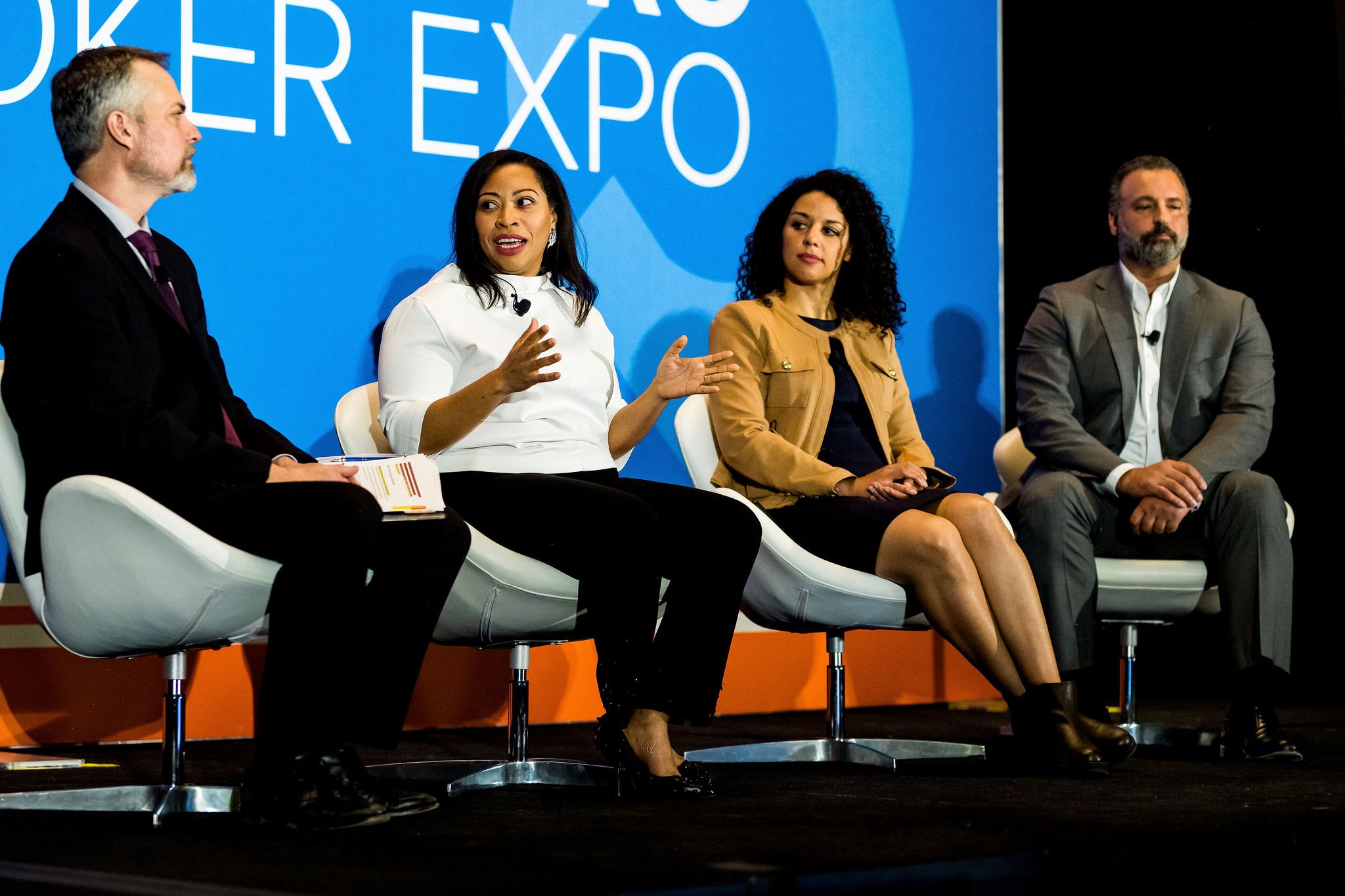|
 Since inception, the consumer-driven health care (CDH) movement has steadily gainedmomentum, as evidenced by the rate at which employers offer CDHplans and the volume of assets that are invested in tax-advantagedaccounts like health savings accounts (HSAs), flexible spendingaccounts (FSAs) and health reimbursement arrangements (HRAs). Butalthough all indicators trend up, growth has not kept pace withrapidly shifting market forces that threaten the future of CDH.
Since inception, the consumer-driven health care (CDH) movement has steadily gainedmomentum, as evidenced by the rate at which employers offer CDHplans and the volume of assets that are invested in tax-advantagedaccounts like health savings accounts (HSAs), flexible spendingaccounts (FSAs) and health reimbursement arrangements (HRAs). Butalthough all indicators trend up, growth has not kept pace withrapidly shifting market forces that threaten the future of CDH.
According to Mercer, while more than 60 percent of employerscurrently offer consumer-driven health plans (CDHPs), onlyone-third of employees are enrolled in them. Meanwhile, theNational Business Group on Health's 2018 Large Employers' HealthCare Strategy and Plan Design Survey predicts that by 2020, 97percent of large employers will offer CDHPs, with an increasingnumber offering those plans as the only option for employees.Clearly, consumer adoption of these plans and the need to managefuture health care spending and saving must occur at a more rapidpace.
|Consumer-driven health care is underpenetrated in the market dueto a combination of dismal consumer engagement, low enrollment, andpoor broker and employer focus. But we can fix these threats ifemployers and brokers work together to deliver winningconsumer-driven health care strategies.
|Turn threats into opportunities
Before we can discuss solutions, we must take a look at theconditions that have led to the current state of CDH: poor plandesign and the inability to properly communicate the valueproposition have created confusion and apathy about health carespending and saving among consumers. If left unchecked, theoriginal mission of CDH — to empower consumers with greater accessto information and number of choices, leading to smarter healthcare saving and spending decisions and ultimately, better healthoutcomes and lower system-wide costs — will fail.
|The good news is it's not too late to get back on the pathtoward true health care consumerism. There is also tremendousopportunity for brokers who get CDH right. According to AiteGroup's recent report “2017 U.S. Health Benefit Accounts: AccountSpending is on the Rise,” only 17 percent of eligible medicalspending flows through tax-advantaged CDH accounts. By cultivatinga more coordinated partnership, brokers and employers have animmense opportunity to help consumers understand the $118 billionsavings opportunity they have just by paying their health careexpenses with tax-advantaged account dollars.
|6 best practices for brokers to implement withclients
1. Partner with employers to develop good plandesign. Poor plan design is the most common reason fordisappointing enrollment results. It's crucial that brokers andemployers remember the fundamental mandate of CDH: that plans offera win for employers, brokers and consumers.
|Good plan design starts with a clear objective, follows a few rulesof thumb, and avoids the perception that employers are unfairlyshifting the cost of health care to consumers without providingequitable value.
|Start by helping employers understand that funding CDH accountsfor their employees is critical to driving account adoption duringopen enrollment. According to Mercer's “National Survey ofEmployer-Sponsored Health Plans 2015,” CDH account adoptionincreases exponentially with direct-dollar contributions fromemployers, to nearly 40 percent with a contribution of $800, upfrom just over 20 percent with no employer contribution.
|Whether employers are saving money by offering a benefit-neutralplan or offering better benefits for the same spend, brokers shouldconvince employers to re-commit health care benefit dollars intoCDH accounts to drive increased participation.
|2. Position the CDH account and plan as an integratedvalue proposition. Every health plan comes without-of-pocket cost responsibility, and therefore, should be pairedwith a tax-advantaged CDH account that saves consumers on average30 percent of their qualified health careexpenses.
|Encourage employers to present the health plan and account as asingle, complementary solution, and help them to communicate thatthese CDH accounts were designed to help offset the increased costresponsibility of the consumer-directed health plan.
|3. Implement a train-the-trainer model withHR. Human resources departments are thegatekeepers of benefits enrollment and adoption. In addition totaking a more active role in overall plan design, brokers can alsoensure that employers are educated on the value of CDH and preparedto drive enrollment. Working with employers to help them betterarticulate plan and account value propositions, as well asdifferences in plan design, can have a huge impact onenrollment.
|4. Encourage employers to disrupt the status quo. It's human nature to avoidchange. As a result, there is a tendency to make it too easy foremployees to take the path of least resistance by allowing them torollover their current benefits elections. To drive adoption,employers must do everything they can to ensure employees reviewtheir options carefully during open enrollment, as well asincentivize them to pick the plans and accounts most beneficial tothem, even if it means undertaking big change.
|Because change can be scary, it's important for brokers to armthemselves and employers with facts, statistics, case studies andother supporting materials that prove the effectiveness ofCDH.
|5. Communication is key to a successful openenrollment. Consumers are confused and overwhelmed by thenumber and complexity of plans and accounts offered. Timely andrepeated communications are key when educating consumers, butbrokers often leave this essential function exclusively to busyemployers who wear many hats.
|An effective communication strategy should focus on accountbenefits and provide access to self-service tools that empower theconsumer to see how they can pull various levers to meet theirunique health care saving and spending needs.
|Ideally all year, but especially two to three months before openenrollment, brokers should work with employers to communicate howaccounts work and to provide account comparison tools andchecklists.
|To make the communication process smooth for employers, brokersshould take the lead producing and maintaining a library of turnkeyreference materials and tools that employers can deploy withminimal effort.
|6. Cultivate and leverage executive buy-in to rallysupport for new programs. Encouraging company executivesto remain visible and vocal throughout the open enrollment process, especially when rolling out new planand account options, can help employees understand that everyone isin this change together for the better. There are many ways inwhich executive influence can be leveraged, including company-widemeeting attendance, communications sent on their behalf, sharingpersonal experiences and more.
|As a bonus, cultivating a partnership at the highest levels ofmanagement within employer groups can add value to the servicesbrokers offer, while differentiating them from the competition.
|Paying dividends now and into the future
As key stakeholders in CDH, we know that consumer engagement iscrucial to drive adoption and funding. Consumers are leavingbillions of dollars in tax savings on the table. As the front linein the march toward CDH, brokers must take the lead with employersto eliminate consumer confusion and apathy.
|Cultivating strong partnerships now to ensure best-in-class CDHimplementations will result in a win-win-win for brokers, employersand consumers as brokers capitalize on the untapped growthpotential of CDH accounts, employers realize hard-dollar costsavings as well as happier, healthier employees, and consumersbenefit from the cost savings and better health outcomes associatedwith more informed spending and saving decisions.
|Steve Auerbach is CEO at Alegeus and a member of its Boardof Directors. Steve has over 25 years of experience in health carebenefits.
Complete your profile to continue reading and get FREE access to BenefitsPRO, part of your ALM digital membership.
Your access to unlimited BenefitsPRO content isn’t changing.
Once you are an ALM digital member, you’ll receive:
- Critical BenefitsPRO information including cutting edge post-reform success strategies, access to educational webcasts and videos, resources from industry leaders, and informative Newsletters.
- Exclusive discounts on ALM, BenefitsPRO magazine and BenefitsPRO.com events
- Access to other award-winning ALM websites including ThinkAdvisor.com and Law.com
Already have an account? Sign In
© 2024 ALM Global, LLC, All Rights Reserved. Request academic re-use from www.copyright.com. All other uses, submit a request to [email protected]. For more information visit Asset & Logo Licensing.








